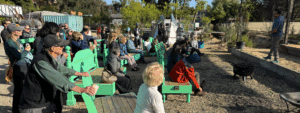November 4, 2014 is election day, and it’s an important one for the Bay Area.
Below are Greenbelt Alliance’s recommendations for how to vote on various ballot measures throughout the region. These recommendations are made with the belief that instead of expanding outward to accommodate a growing population, it is better for our environment, economy, and communities to reinvest in our cities and towns in ways that benefit all Bay Area residents.
Also read Executive Director Jeremy Madsen’s thoughts on the upcoming election from the front page feature of the Sunday, September 28, 2014 edition of the San Francisco Chronicle.
South Bay
SANTA CLARA COUNTY
YES on Measure Q This annual $24 parcel tax measure will fund:
- Preservation of open space, wildlife, redwood forests, and agricultural land
- Increase in public access to open space and improvements to parks, trails, and trail connections
- Protection of water supplies via land around creeks, rivers, and streams
- Local environmental and outdoor education programs (25% of the funds)
East Bay
DUBLIN
NO on Measure T
Measure T is a developer-sponsored attempt to break Dublin’s new eastern urban limit line, opening the floodgates for sprawl development on 1,650 acres in Doolan Canyon. Read more >>
ALAMEDA COUNTY
YES on Measure BB
Measure BB is the proposed reauthorization, increase, and extension of Alameda County’s 1/2 cent transportation sales tax. The measure infuses resources for transit, street repair, walking and biking infrastructure, and transit-oriented development. Read more >>
BERKELEY
NO on Measure R
This misguided measure would undo much of Berkeley’s award-winning Downtown Plan, making Berkeley more expensive, more car-dependent, and more polluted as a result. Read more >>
UNION CITY
NO on Measure KK
Measure KK breaks voter-approved open space protections to develop 63 acres of open space next to regional parkland. Read more >>
Peninsula
SAN BRUNO
YES on Measure N
Measure N will help revitalize downtown San Bruno by updating decades-old city planning rules and development guidelines, including outdated height restrictions. This will attract new businesses, make the area more walkable and transit-friendly, and generate new revenue for community services. Read more >>
Photo: jameleh via Flickr




